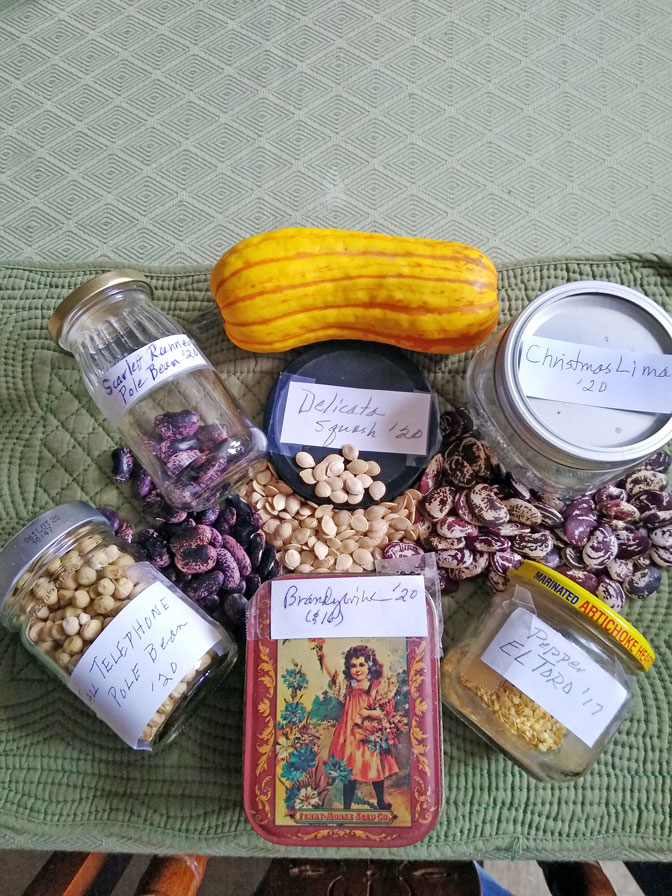by Christine Maccabee
Seed Savers
Most people who have been gardening for many years already have their favorite seeds in mind for planting this spring, be they hybrid or non-hybrid. It can be a bit bewildering when looking through the various seed catalogs, as there are so many varieties of seeds to choose from. However, I highly recommend buying some good heirloom/old-variety/non-hybrid seeds if you wish to be somewhat independent of catalogs in the future.
Seed-saving is not possible with hybrid seeds, as they do not carry the germ of the past, the genes of antiquity, and so will not germinate. Thankfully, the best seed catalogs do have heirloom seeds identified as such, so keep an eye out for them. In fact, some of the descriptions have short stories as to their origins, which I always find fascinating.
One such story is about “Mrs. Maxwell’s Big Italian tomato.” A friend from Italy gave her some seeds that they swore by. Mrs. Maxwell planted them, cultivated them, and shared them with other seed-savers. Eventually, the seeds made their way to a catalog company where the fruit is described as “the largest, earliest, and most crack-resistant.” My favorite tomato for 30 years now is the Brandywine Red, a Pennsylvania Amish heirloom, dating back to 1885, but this year I think I will try a Mrs. Maxwell as well!
There is a mysterious bean that I bought in Amish country years ago, called Mostoller’s Goose Bean. The story goes that Mr. Mostoller, a homesteader in the Appalachians shot a goose for dinner, and as he cleaned it, he found one beautiful seed in its craw. As he was a survivalist, like most settlers were, he planted the seed. It grew abundantly, and so he shared extra seed with friends and family. It is a wonderful soup and stew bean, and it also made its way to a seed catalog. I bought some in the 1990s and grew it for many years until I decided not to, and now I miss it. It is rare, and so I must find some seed savers online in order to plant it again.
As for peas, I can brag that I have not had to purchase pea seeds in 25 years. The seeds of Tall Telephone pea are a must for me to grow, eat, and save. They are a perfect space-saver—and back-saver as well—since they grow very tall, usually higher than five feet on stable fencing. Last year mine grew eight-feet-tall due to my rich soil and lots of rain. The yield is always great, and I don’t have to bend over to pick the pods.
Many settlers who came to the New World from Europe and elsewhere brought their seeds with them, fully aware that seeds were essential for survival. Think of the example of Johnny Appleseed sharing old variety apple trees with grateful settlers. Of course, Native Americans had their specialty seeds as well. I like to think that the bean, Mostoller, found in the craw of a goose was one the Natives grew! A Cherokee friend of mine told me her great-grandmother remembered pow wows in this high mountain valley I now inhabit. As I plant my heirloom seeds in the rich soil of my gardens here, I feel a deep connection with the Natives. They were the first inhabitants here and seed-savers as well!
Now is the time to look through seed catalogs and make your order. Why not try some different seeds this year by looking for seeds that will live on and on. Join the committed society of seed-savers. As you plant, eat, save, and share your heirloom/old variety seeds, know that you are participating in an ancient tradition, a heritage unlike any other.

Some old variety/heirloom seeds of Christine’s, stored in jars and tins.

